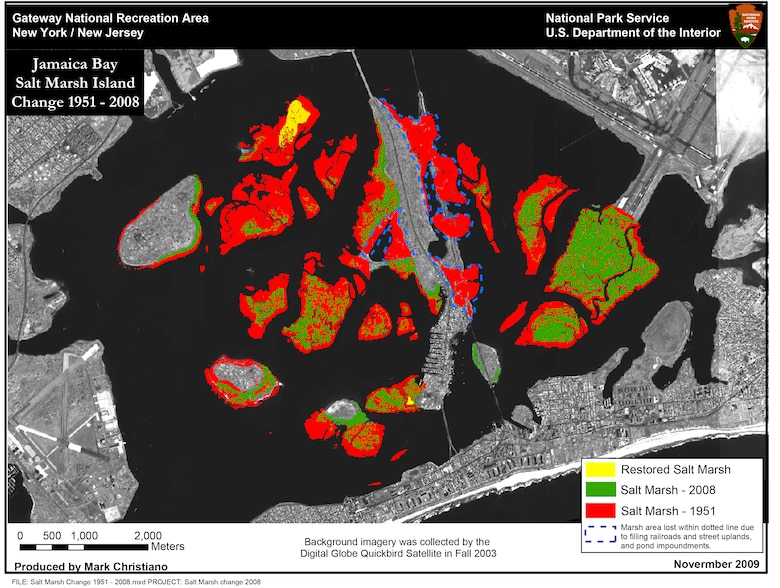Army Corp & NYC DEP team on restoration projects
January 16, 2023
Federal BIL funding to help reduce storm damages.
Funds from the Bipartisan Infrastructure Law (BIL) are enabling the U.S. Army Corps of Engineers to partner with agencies to revitalize wetlands, which buffer communities from flooding and storms.
In particular, USACE New York District is undertaking several projects to restore degrading ecosystems in the New York and New Jersey region.
Urban activities, including sewer outflows and contaminated landfill water runoff, have degraded the natural resources needed for wildlife to thrive and clean water quality (by naturally filtering contaminated sediment). In addition, the natural resources provide recreational opportunities and boosts the regional economy.
A study by insurance company Lloyd’s shows that marshes can critically reduce damage to infrastructure from coastal storms. During Hurricane Sandy in 2012, marshes prevented $625 million in direct flood damages across 12 states. New Jersey coastal marshes are estimated to have reduced property damages by more than 20%.
Stony Creek Marsh Island Restoration Project, Jamaica Bay, NY
New BIL funds enable the Army Corps to collaborate with the New York City Department of Environmental Protection (NYC DEP) to restore 62 acres of Stony Creek Marsh Island, within Jamaica Bay which is surrounded by John F. Kennedy International Airport, the Belt Parkway, and several landfills.
The bay provides “critical spawning and nursery habitat for more than 80 migratory and estuarine fish species, as well as terrapins and four species of endangered or threated turtles.”
Moreover, “300 bird species – about 20% of the nation’s birds – call Jamaica Bay home” and visit annually as a stopover along the Atlantic Flyway migration route to breeding grounds.

Without restoration, the marsh island complex would completely vanish by 2025. The Army Corps and partnering agencies have restored about 180 acres of marsh in Jamaica Bay through several successful restoration projects.
Lisa Baron, project manager, New York District, U.S. Army Corps of Engineers outlined significant benefits, “Restored marsh islands keep sediment within the Jamaica Bay system; wetland vegetation stabilizes the island; the islands reduce waves and erosion of surrounding shorelines and adjacent islands; the wetlands improve water quality within the bay; and the marsh islands we construct will continue to build the ecological resilience of the bay to respond to increasing sea level rise.”
Flushing Creek Restoration Project, Borough of Queens, NY
The Army Corps and NYC DEP are also collaborating to restore a large portion of Flushing Creek, another stopover point along the Atlantic Flyway migration route. A 19-acre site includes shoreline and is surrounded by a highly developed area with houses, transit, businesses, and industry.
Like Jamaica Bay, the creek’s marsh habitat has degraded due to urban development such as wetland infill and creek reconfiguration. Habitat loss, bank erosion, low benthic and fish abundance and diversity, and poor water quality have been observed.
Removal of invasive plant species and regrading of soil to restore wetlands and upland forests are planned.
Upon completion, the restored habitat along Flushing Creek will be characterized as a “more diverse, functioning community that will contribute to shore stabilization and flood control.”
In addition to more public safety, residents will have improved access to green space and a revitalized waterfront for recreation and education about wildlife – birds and fish.